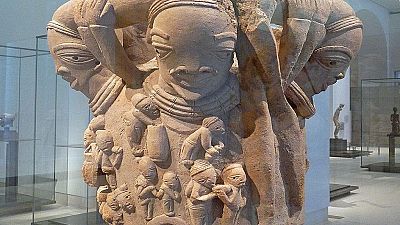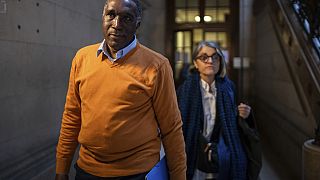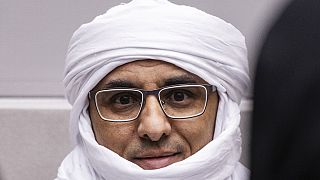France
Belgium’s Africa Museum, once a triumphant celebration of the country’s colonial past, is to reopen after years of renovations, with a more critical view on a dark piece of history.
The museum, full of historic artefacts and stuffed wildlife, was often criticised for ignoring the brutalities of a time when millions of Congolese are estimated to have died when Congo was first a personal fiefdom of King Leopold II in the late 19th century before becoming a colony of the Belgian state.
A golden statue of a European missionary holding an African child with a plaque that reads: “Belgium brings civilization to Congo”, will remain on show, but its historical context will be explained.
“We hope to bring that new story, that new narrative, in our museum,” said Guido Gryseels, managing director of the museum which is set to re-open in December.
The Belgian government has spent $77 million modernising the museum, set in a palatial, neoclassical building in a sprawling park just outside the capital Brussels.
“What happened back then in Congo, no matter how awful I find it, we cannot rewrite it. But we can reflect it in a correct way,” said Zuhal Demir, a minister in the Belgian government.
The plunder of Africa should never be forgotten
Africa’s history, specifically the plunder of its resources and people by Western powers has for a long time been a subject of interest to historians and curators of museums.
There have been calls for the United Kingdom to establish a museum dedicated to its 16th century empire that enslaved, colonised and looted the continent of Africa.
The United States established its first federally funded museum of African-American History and Culture in 2016.
Africa’s heritage showcased outside the continent
Even then, there is no shortage of African artefacts and cultural items that are showcased in several European and American museums.
SUGGESTED READING: Salah’s boots to be displayed in Egyptian collection at The British Museum
Several campaigners have been asking that these museums return cultural artefacts which represent a glaring gap in the educational and history work of African nations.
This week, the United Nations Educational, Scientific and Cultural Organisation (UNESCO) heard a case brought before it by Zambia, which is demanding for the return of the Broken Hill Man Skull.
Zambia’s National Heritage and Conservation director, Collins Chipote explained that the Skull, discovered in 1921 during a mining operation was of great sentimental value to Zambians and its absence in the country had deprived nationals of the knowledge about technology and human development in the distant past.
There was also a heated debate in April when the Victoria and Albert Museum in the United Kingdom offered to loan a collection of Ethiopian treasures, seized by the British in 1868, to the Horn of Africa nation.
Many Africans argued that the treasures, which include an 18th-century gold crown and a royal wedding dress, should be permanently returned to their country of origin, as opposed to the long term loan proposals.














Go to video
Six arrested over break-in at Lumumba’s Mausoleum
11:05
Africa's hight cost of climate change [Business Africa]
02:19
From tattoos to bark cloths, Samoa keeps proud traditions alive
00:53
Congo reports vandalism of Lumumba's Mausoleum holding gold-capped tooth
01:17
COP29 finance talks lag as the summit reaches its halfway mark
01:00
Tunisia: French student detained for weeks, flies back home